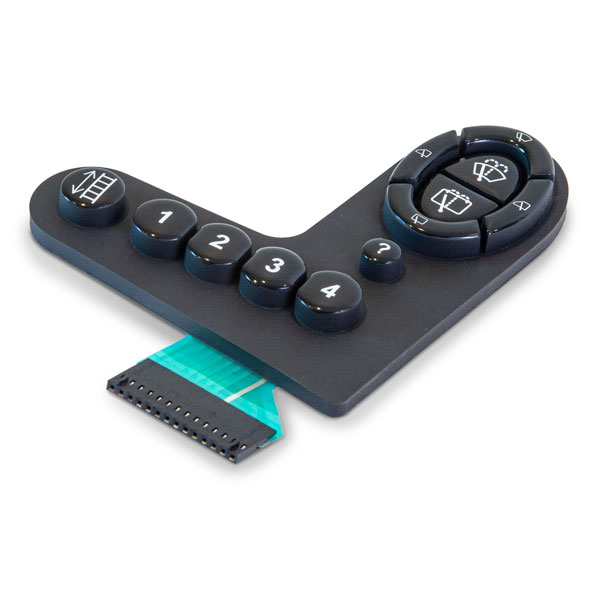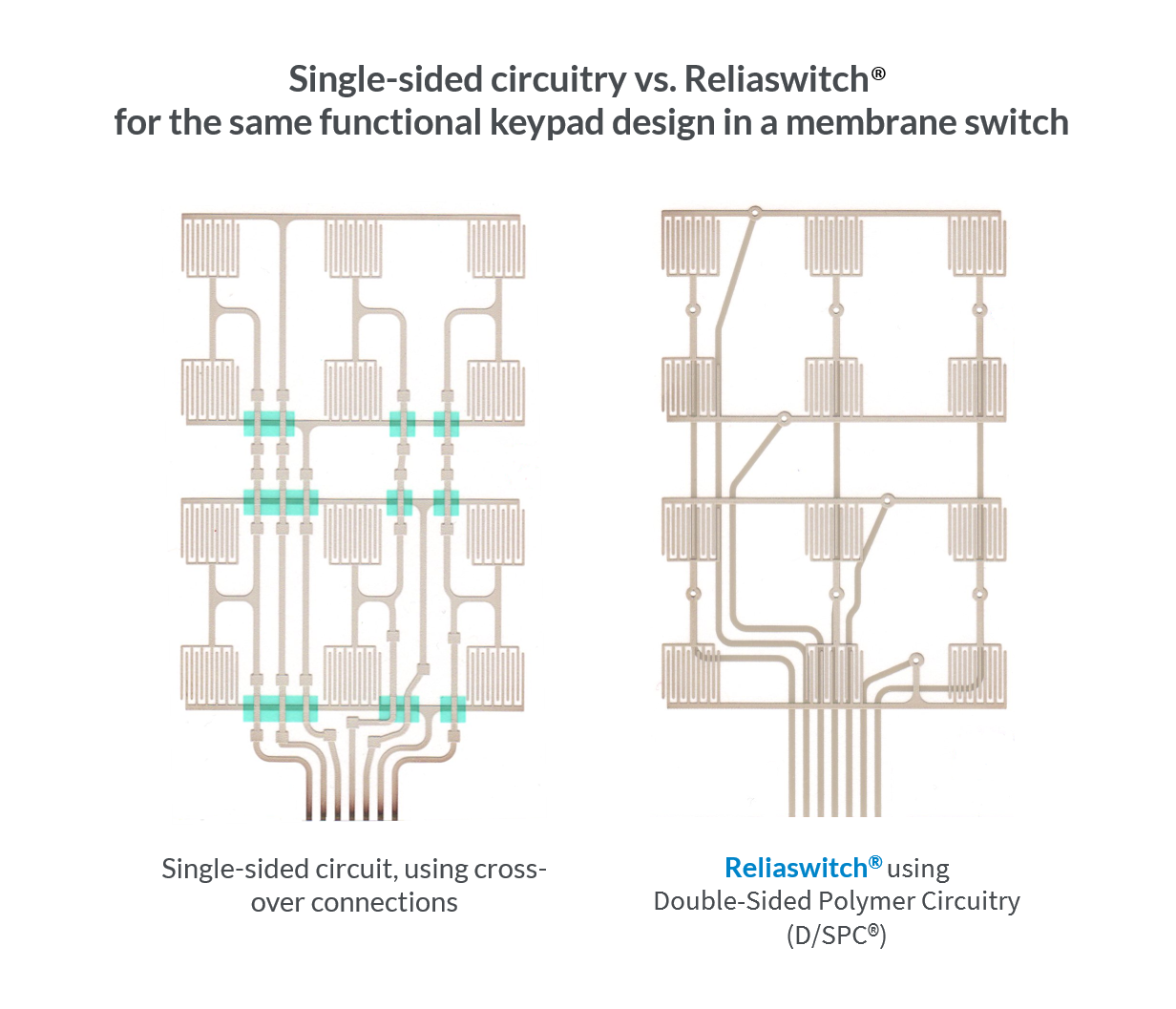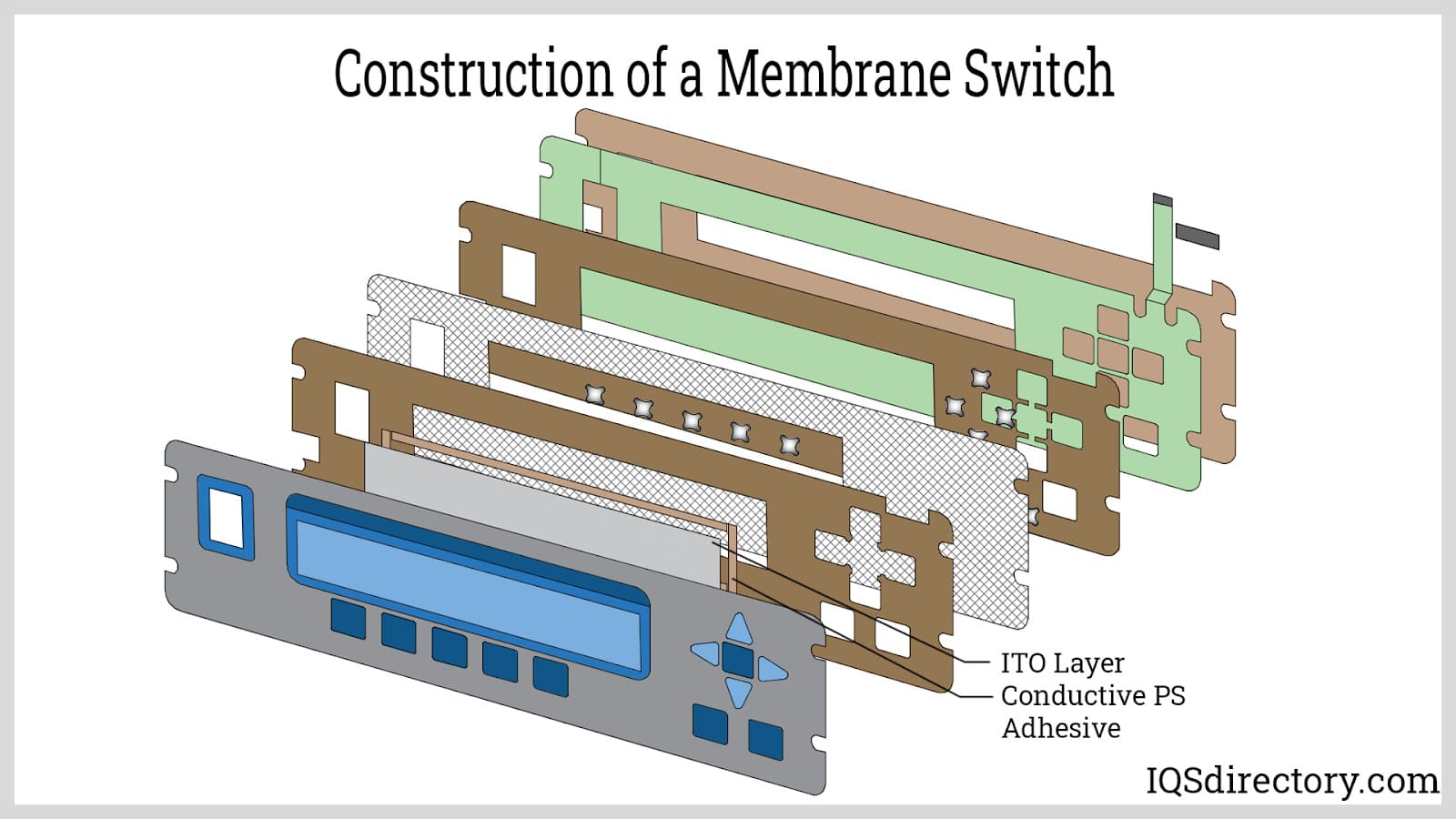Exploring membrane switch applications in harsh environments
Wiki Article
The Manufacturing Refine Behind Membrane Layer Switch: What You Need to Know
The production process behind membrane switches over combines cautious design, product option, and quality assurance. It begins with understanding the intricacies of membrane layer button layout and advances through numerous phases, consisting of material options and printing methods. Each phase plays a necessary function in ensuring capability and longevity. The intricacies of layer building and the strenuous screening criteria may reveal understandings that are not promptly apparent. What exists past these foundational aspects?Understanding Membrane Change Design
Although membrane buttons may appear straightforward in the beginning glimpse, their style entails intricate considerations that ensure performance and durability. The design process begins with a thorough understanding of individual needs, including the user interface's desired application and environmental aspects. Ergonomics is an essential component, as the layout has to assist in ease of usage while making certain that responsive comments meets individual expectations.Moreover, the layering of parts, such as graphic overlays, sticky layers, and conductive traces, have to be exactly crafted. membrane switch. This layered setup not just affects the switch's responsiveness however additionally impacts its durability. Interest is provided to the securing methods used to safeguard versus dampness and dust, which could compromise efficiency. In addition, layout factors to consider encompass visual appeals, where color schemes and visual clearness boost customer experience. Eventually, the style of membrane switches equilibriums capability, customer experience, and durability, making certain that they satisfy the demands of numerous applications efficientlyProducts Used in Membrane Layer Change Production
When choosing products for membrane button manufacturing, it is vital to ponder both performance and resilience. The key materials consist of polyester and polycarbonate movies, which offer flexibility and toughness. These movies are usually covered with sticky to assure correct bonding to substrates. Conductive inks, normally composed of silver or carbon, are essential for developing electrical connections within the switch, enabling for trusted operation.Additionally, a protective layer, such as a difficult layer, is often used to boost scrape resistance and durability. The selection of backing material, such as acrylic or foam, can substantially influence the switch's tactile feeling and overall individual experience. Moreover, various ecological variables, including temperature and moisture, need to direct product selection to ensure peak performance in particular applications. Eventually, the best mix of products adds to the membrane layer button's capability and life expectancy, making educated options crucial for manufacturers.The Printing Refine: Creating Video and Text
The printing process in membrane switch production plays a considerable function in generating top quality graphics and text. Different visuals layout techniques are employed to ensure visual charm and capability, while mindful ink option approaches are crucial for durability and performance. Recognizing these components is essential for accomplishing finest lead to membrane switch layout.Graphic Style Techniques
Graphic design techniques play an essential duty in the printing procedure of membrane buttons, as they specify exactly how graphics and text will inevitably show up on the final item. Reliable graphic layout entails the calculated use font styles, formats, and shades to improve readability and visual charm. Designers commonly use vector graphics for scalability, guaranteeing that photos stay sharp at numerous sizes. In addition, interest to contrast and placement is crucial, as it affects customer interaction and aesthetic quality. The incorporation of branding components, such as logo designs, must be managed with treatment to keep brand stability. Overall, thoughtful graphic style strategies contribute significantly to the capability and beauty of membrane layer buttons, impacting individual experience and item efficiency.Ink Option Methods
Choosing the proper ink is important for accomplishing the wanted aesthetic quality and sturdiness in membrane layer button manufacturing. Numerous ink types are utilized, including solvent-based, water-based, and UV-curable inks. Each type uses unique features, such as adhesion, flexibility, and resistance to environmental factors. Solvent-based inks are frequently favored for their sturdiness and lively shades, while water-based inks are a lot more ecologically pleasant however may have limitations in adhesion. UV-curable inks provide rapid curing and robust performance. In addition, shade matching strategies assure that the picked inks straighten with layout requirements. Inevitably, the selection of ink should take into consideration variables such as application approach, substratum compatibility, and end-use demands to achieve superior lead to membrane layer button graphics and text.Layer Construction and Setting Up

Material Choice Process
A cautious choice of products is crucial in the manufacturing process of membrane switches, as it directly influences functionality and resilience. The main materials utilized consist of polyester, polycarbonate, and different conductive inks. Polyester is usually preferred for its excellent resistance to chemicals and abrasion, making it suitable for harsh environments. Polycarbonate, on the other hand, offers remarkable quality and influence resistance, which is useful for applications needing exposure and toughness. Conductive inks, normally made up of silver or carbon, are essential for developing trusted electric paths. Additionally, the choice of adhesive materials affects the general honesty of the switch - membrane switch. Assessing elements such as environmental direct exposure, responsive comments, and aesthetic requirements overviews suppliers in choosing the finest materials for their specific applicationsLayer Attachment Methods
Adhering layers in membrane layer button building is a crucial process that assures capability and durability. Various attachment methods are employed to safeguard excellent bonding between layers, which typically consist of making use of adhesives, heat, and stress. Pressure-sensitive adhesives (PSAs) are commonly made use of for their simplicity of application and immediate bonding capacities. Furthermore, thermal bonding techniques can be used, where heat is utilized to activate sticky properties, protecting a strong bond. The selection of adhesion technique mostly relies on the materials entailed and the particular application needs of the membrane button. Appropriate placement and uniform application of adhesives are essential to protect against problems, securing the button operates properly throughout its designated life-span.High Quality Control Measures
Ensuring quality assurance throughout the layer building and setting up of membrane switches is crucial for preserving performance and integrity. This process normally involves several important actions, including detailed inspections at each stage of production. Makers make use of advanced testing techniques, such as peel tests and attachment analyses, to verify the stability of layer bonds. Furthermore, aesthetic examinations are conducted to identify any type of flaws in printing or product inconsistencies. Environmental problems, such as temperature level and humidity, are thoroughly checked to guarantee look at more info perfect treating and bond. In addition, normal calibration of tools aids maintain specific production criteria. By applying these quality assurance measures, manufacturers can greatly minimize the risk of item failure, guaranteeing that the last membrane layer great site switches fulfill the needed specifications and consumer assumptions.Examining and Top Quality Control Measures

Technologies in Membrane Layer Switch Over Technology
As developments in technology remain to evolve, membrane buttons are benefiting from ingenious growths that improve their functionality and individual experience. One significant technology is the integration of capacitive touch innovation, which enables more instinctive and responsive interface. This change not only improves aesthetic appeals yet additionally reduces mechanical damage, prolonging the life expectancy of the switches.Additionally, innovations in visuals overlay products have actually caused improved longevity and resistance to environmental variables such as wetness and UV light. These materials now supply improved clarity and illumination, further boosting the visual appeal.Furthermore, the incorporation of wise modern technology is changing membrane changes into interactive control board, allowing connection with IoT gadgets. This connectivity cultivates a seamless customer experience, leading the way for applications in various markets, from healthcare to customer electronic devices. Collectively, these technologies setting membrane layer switches over as critical elements in modern gadget design.Often Asked Inquiries
For how long Does the Membrane Layer Switch Over Production Process Take?
The duration of the membrane layer switch manufacturing process can differ substantially. Aspects such as complexity, products utilized, and manufacturing volume impact timelines, with common manufacturing ranging from a few days to numerous weeks for completion.What Are the Common Applications for Membrane Layer Switches?
Membrane layer switches are typically used in different industries, consisting of auto controls, family devices, medical gadgets, and consumer electronic devices (membrane switch). Their versatility and durability make them suitable for applications needing straightforward user interfaces and trustworthy performance in diverse environmentsCan Membrane Switches Be Customized for Certain Demands?

What Is the Life expectancy of a Normal Membrane Layer Switch Over?
The lifespan of a regular membrane switch varies, but typically, it ranges from 1 to 5 million cycles. Elements such as usage, atmosphere, and material quality considerably affect sturdiness and general efficiency with time.

Are Membrane Switches Over Eco Friendly?
The ecological friendliness of membrane switches over differs. Some materials made use of may not be recyclable, while others can be environment-friendly. The overall effect depends upon producing methods and products, demanding cautious consideration during option and disposal. The production procedure behind membrane switches over combines cautious layout, material choice, and top quality control. It starts with comprehending the ins and outs of membrane layer button style and progresses via numerous stages, consisting of material choices and printing strategies. When selecting materials for membrane switch production, it is necessary to ponder both efficiency and longevity. A careful selection of materials is essential in the manufacturing procedure of membrane switches, as it straight influences functionality and sturdiness. The option of attachment technique largely depends on the materials included and the particular application needs of the membrane layer button.Report this wiki page